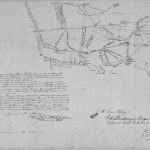
By John Myers
Background
For decades I have worked with Joan O’Callaghan who like me began as a classroom teacher and through a long a distinguished career wound up teaching English Language Arts (ELA) curriculum and Instruction courses at OISE. We were both interested in looking at the world through the media- newspapers in the “old days” and “fake news” today.
Joan and I have also used our mutual complementary understandings in a number of national projects. One approach to getting students to be more “open minded” about an issue is simply to present them with alternatives that they must weigh in order to render a defensible judgement.
Joan’s strategy of a “clipping thesis” which I now call media file when the work is all online can be done for all subjects and grades from grade 6 up. A version of the following, including question-generating strategies, appeard in the Perspectives Column in Rapport 36 (2) Feb. 2014 titled Promoting Independent Learners.
Much of what we know or learn about the use or misuse of technology in the classroom and beyond comes from the media. So it is important to learn how to analyze media treatment of any issue. This can be made a component of the culminating end-of-unit task to be displayed or handed in or used separately if there is a current event that has attracted the class’s interest.
- Students either individually, in small groups, or as a whole class select a problem or issue in Canada today that they wish to explore (see snowball technique from the Rapport issue cited above)
- They collect stories, pictures, or information, about the topic over a three or four-week period from the local newspaper or other media, including appropriate and online sources approved by you, national newspapers, news magazines, television and radio..
- They prepare an analysis which might include such aspects as the following:
- • historical background to the issue (as reported in the newspaper and in the text),
- • the perspective(s) taken by the newspaper or other media examined,
- • a weighting of the different perspectives in order to arrive at a defensible
conclusion on the issue in question.
The following are just some of the topics and questions that students may use for developing theses based on readings from their local paper and other media sources. The questions are applicable for Social Science, Law, and Philosophy courses as well as History and Geography courses.
| Topic | Critical Question (s) |
| Good news / bad news | Do media tend to report on tech news showing us at our best or at our worst? |
| Coverage of issues in technology | Are these reported as one-dimensional or are underlying complexities noted?Is the reporting positive or negative about the issue? Does the reporting change over time? If so how? |
| Tech addiction | Real or fake? |
| Tech in the classroom | What are the effects on learning? What evidence is offered to support the positions taken? Where do you stand and why? |
| Cyberbullying | Does the media give this the attention you think it deservs? |
| Role of Government | Should our provincial education ministry or school district have a policy? Can you justify your personal response? |
| Tech for learning | What promising approaches has the media reported for using social media for learning? What evidence of successful learning do they contain? |
| Does this promote critical thinking for democracies? | |
| What place if any does google have in doing research? |
The clippings can be included as a portfolio or eportfolio or cited in an essay on the topic and question.
Some school libraries have signed on to databases of various news media, including newspapers, magazines, television and cable news sources. Some are free of charge such as
- http://www.onlinenewspapers.com, and
- http://www.thepaperboy.com
The clipping thesis helps students go beyond the headline to trace the story. If the news story is the first draft of history, it will not be the last. In the area of research and critical thinking we can either preach to students or teach them to development the skills and habits of mind to be critical and careful consumers of information.
Speaking of headlines, students can compare front-page coverage from a dozen Canadian newspapers, and hundreds from more than 50 countries by checking http://www.newseum.org/todaysfrontpages daily from Washington’s Newseum. How big an issue is tech in learning around the world?
Online selection can be part of a “media file” to develop the clipping thesis. Here you might begin by working with your students to develop:
- search techniques, in addition to just “googling”
- questions for any online investigation or webquest
- criteria for evaluating the usefulness of the website itself.
The final part in this series looks at the results of the work my teacher candidates did in Part 1 and suggests an implication or two.
John Myers is an instructor at OISE and a long time contributer to Rapport.


